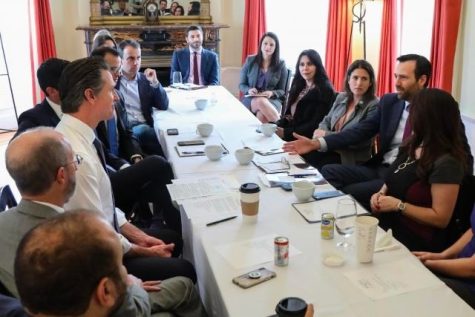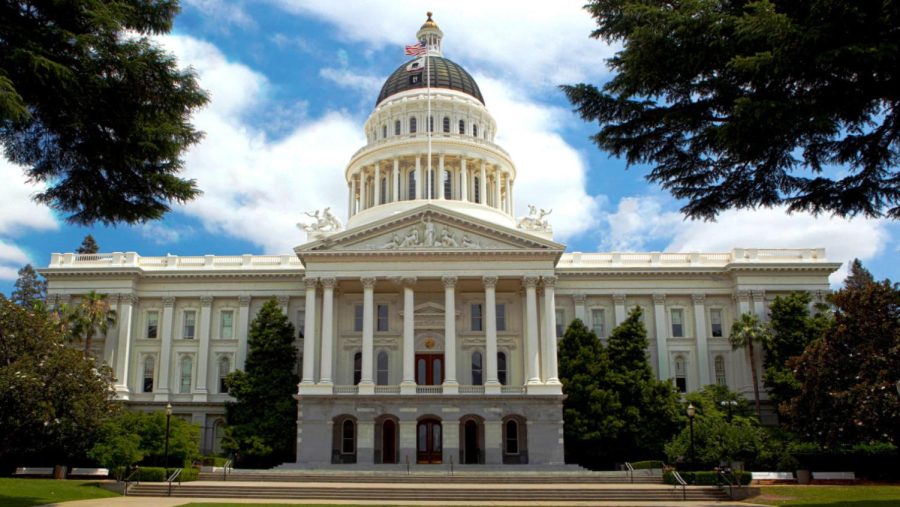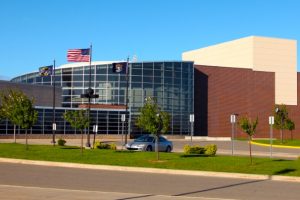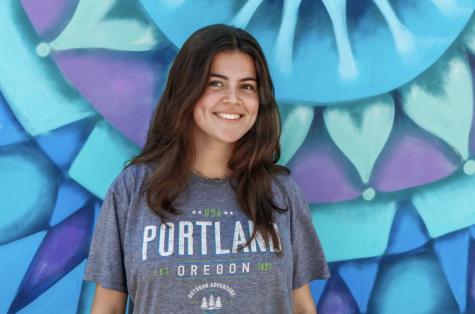Ethnic Studies curriculum not planned for Shalhevet, officials say
Private schools are exempt from new state law that takes effect in 2025; officials say not needed because subject is covered in existing classes
LAW: AB 101 was passed by the State Legislature in Sacramento in September.
January 30, 2022
With students and teachers divided on the subject, Shalhevet’s administration so far does not plan on implementing an ethnic studies course, as state public schools will soon be required to do, saying teachers are covering similar material in classes and in programming that already exist.
California State Assembly Bill (AB) 101, signed Oct. 8 by Gov. Gavin Newsom, requires that all public high schools offer a one-semester ethnic studies course by the 2025-26 school year and that all students graduating in 2030 will have completed the class.
Legislators said the requirement aims to strengthen voices of historically marginalized peoples by teaching their history, contributions and struggles. It includes a “Model Curriculum” primarily focused on Black, Indigenous American, Asian American and Latino communities, while also including smaller sections on other communities, such as Jewish and Muslim Americans.
Because it is a private school, Shalhevet is exempt from state graduation requirements, including the new one for ethnic studies. But the administration could add ethnic studies if they chose to, as they include a public-school required course in government and curriculum elements required for entry to the University of California.
Principal Mr. Daniel Weslow said Shalhevet’s teachers have the freedom to develop their own courses and craft their own syllabi, he said, rather than using “canned” ones such as the Model Curriculum created for the ethnic studies course.
He said Shalhevet courses contain elements of ethnic studies because teachers put them there.
“Elements of the [ethnic studies] curriculum are taught and discussed,” Mr. Weslow said. “Our faculty is really thoughtful about their approach and their conversations in class – they are bringing sources from all over because they want to engage in conversations, and to provide students with the ability to understand the power of truly listening to each other.”
Students agreed. Senior Caleb Fishman said his favorite things about his history courses has been their integration of minority perspectives.
“In all of my history classes, minority and ethnic studies has been at the forefront of every unit,” Caleb said.
His current history course, Dr. Keith Harris’s Topics in U.S. History and Los Angeles, has “spent weeks looking through the historiography around minority perspectives and memory history following the Civil Rights movement in the 60s.”
Sophomore Jacob Kilberg had a similar experience in Mr. William Reusch’s U.S. History class.
“Especially this year when we were learning about slavery,” Jacob said. “We saw many perspectives of free Black people, either writing books or working their way to gain freedom for all African-Americans.”
Judaic Studies Principal Rabbi David Stein said the school takes measures to educate students and faculty on diverse perspectives, including hosting last year’s panel of speakers who spoke about being both Black and Jewish in America, and the teaching of both the Zionist and Palestinian narratives in Israel education courses.
Caleb said that Shalhevet students are well-educated on race.
“Race isn’t a subject Shalhevet shies away from or ignores,” Caleb said. “Across multiple Town Halls and in the classrooms, it’s often addressed.”
But others countered that more would be better.
Math and physics teacher Mr. Rico Tan, who is from the Philippines, said that as a minority, he would feel more comfortable if people were educated on his culture and history.

Mr. Tan said offering an ethnic studies course would “reduce ignorance and diversify mindsets, thereby minimizing chances of inadvertently saying something offensive.”
Junior Zoe Ritz said an ethnic studies curriculum would improve the discourse about race among Shalhevet. She said that during the Black Lives Matter protests, aggressive comments were made in group chats that promoted stereotypes and hostility which she thought were products of ignorance, not malice.
“We all need to be open to learning about each other,” said Zoe, “because essentially that’s what’s going to end hatred, stigmas and stereotypes that we’re learning from the media.”
English teacher Nancy Fasules said ethnic studies would also allow bridges to be built between minority communities so they could support each other.
“One of the dangers in America is people are pitted against each other, and I think this would help solve it,” Ms. Fasules said. “There should be more of a connection and empathy.”
Rabbi Stein said another benefit would be to let communities who had been previously marginalized to write their own narratives.
“Imagine what that would have meant for anti-semitism in previous generations, if we had had that voice,” said Rabbi Stein.
In its statement prefacing the Model Curriculum, the California Department of Education said the bill intends to remedy the exclusion of various communities by “address[ing] institutionalized systems of advantage, the causes of racism and other forms of bigotry including, but not limited to, anti-Blackness, anti-Indigeneity, xenophobia, antisemitism, and Islamophobia within our culture and governmental policies.”
But while everyone interviewed at Shalhevet seemed to think learning about other ethnicities was a good idea, not everyone thought studying prejudice was.
Junior Maayan Mesica said a focus on racism and other forms of discrimination would be counterproductive.
“Instead, we should be focusing on loving and gaining appreciation and expanding our knowledge about them,” said Maayan.
Eliana Kerendian, another junior, disagreed. She said that since ignorance and misinformation are roots of harmful biases, actively listening to experiences of oppression is the key to combating prejudice.
“Like English, like math, learning about and participating in discussions about racial issues is a skill you need to build up,” said Eliana.
Mr. Tan suggested offering an elective, for those most likely to appreciate it and because there are a finite number of hours in a school day.
Junior Dani Kunin thinks creating a separate course would marginalize people more, and instead school should do more of what it already does. His U.S. History class last year learned over Zoom with a predominately Black public school about the Reconstruction Era and the history of immigration and mass deportations. Mr. Reusch taught that class as well.
He wished it had been longer.
“If we had more sessions or more exposure to people of different backgrounds, it would have been a more inclusive curriculum,” he said.
The development of the state-approved curriculum – which by law cannot actually be legally mandated but only suggested – raised concerns for Jewish groups, including in the Legislature. However, these concerns appeared to have been resolved by the time Gov. Newsom signed the bill into law last fall.
An initial draft neglected mention of American Jews and contained anti-Zionist rhetoric, According to TimesofIsrael.com, that draft endorsed The Boycott, Divestment and Sanctions movement and referred to Israel’s independence as “Nakba,” or the catastrophe, as it is known in Arabic. It also provided song lyrics that accused Jews of exploiting the media for personal gain.
The current Model Curriculum was developed with input from the Anti-Defamation League (ADL) and supervised by both the State Board of Education and the Jewish Legislative Caucus. In addition to Jewish communities, it now also mentions Sikhs and Armenians, and has filtered out words like “cisheteropatriarchy” and “hxstory.”
The document — a curriculum outline and suggested lesson plans — was accepted by many groups who had previously opposed it. It was then unanimously approved by the California State Board of Education last March.
“Included are two new lesson plans covering Jewish American experiences,” wrote ADL’s Seth Brysk last February on an ADL website. “Gone are the overt antisemitism and egregious anti-Israel content.”
However, as the approved draft was being written, a third version was simultaneously developed, by an organization formed by the authors of the original, rejected draft. This draft, according to media reports, defines Israel as having apartheid policies and perpetuating “settler colonialism,” and alleges Jewish greed for power in discussing Zionist views.
Since each school district ultimately has the authority to choose which curriculum to implement, some students might still be taught from these versions.
To prevent this, AB101 includes seven “guardrails” and supplies teachers with resources for professional development.These require that the curriculum be suitable for students of all backgrounds and identities, not advance any form of prejudice or discrimination and not reflect any religious beliefs.
Since AB101 doesn’t go into effect for a few more years, Shalhevet could still decide to offer something, perhaps about other religions or cultures, to make its students’ experience more similar to that of other high school students throughout the state.
But whatever happens, Rabbi Stein says that tension and conflict are inevitable when there is a societal push to shift the perception of truth.
“Who has the right to create truth and educate about truth?” Rabbi Stein asked. “It makes sense that there’s dissent and debate. What does it mean to give voice? Only to those without power? Or all? What’s truth, and what should we teach?”















